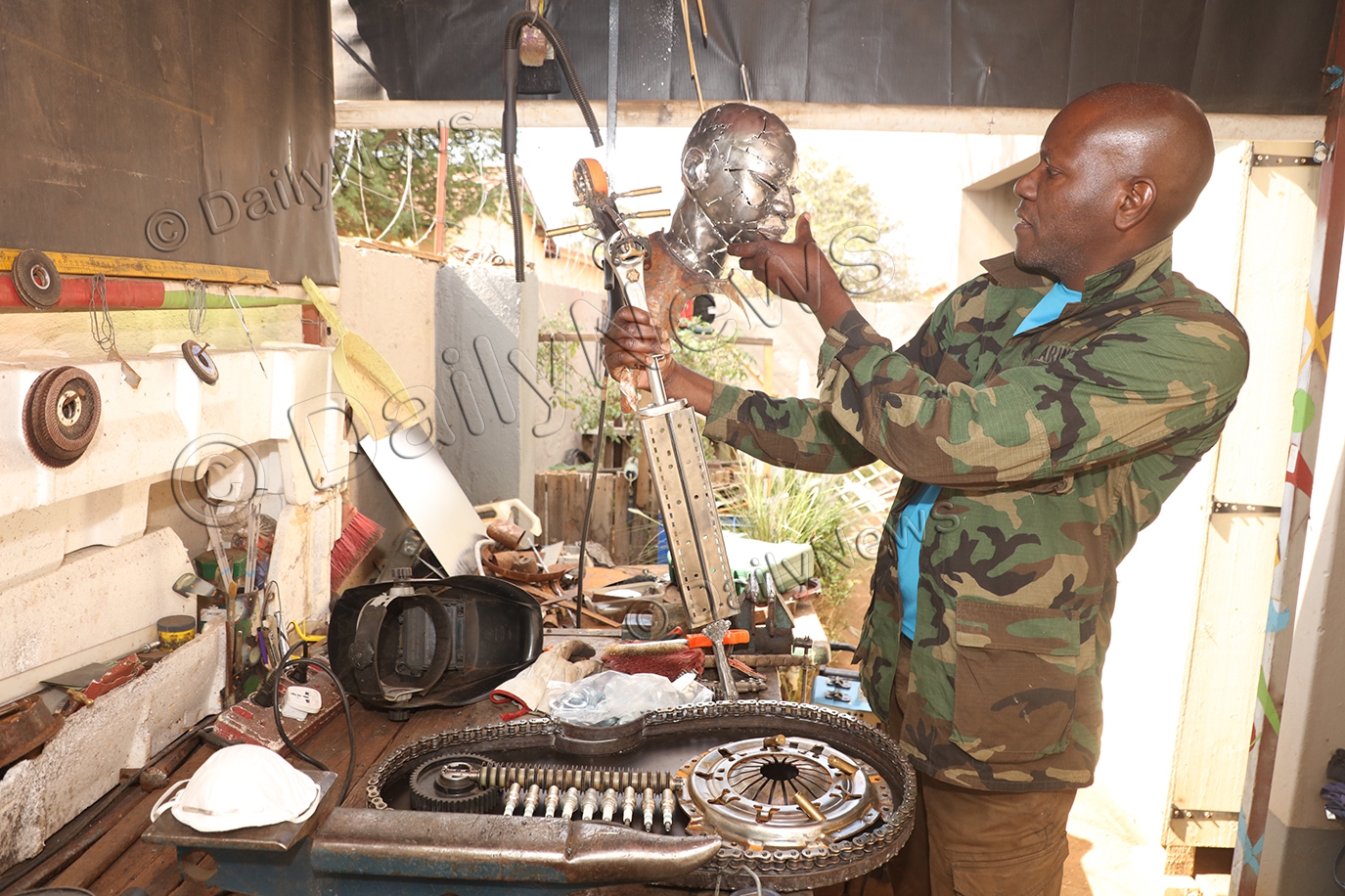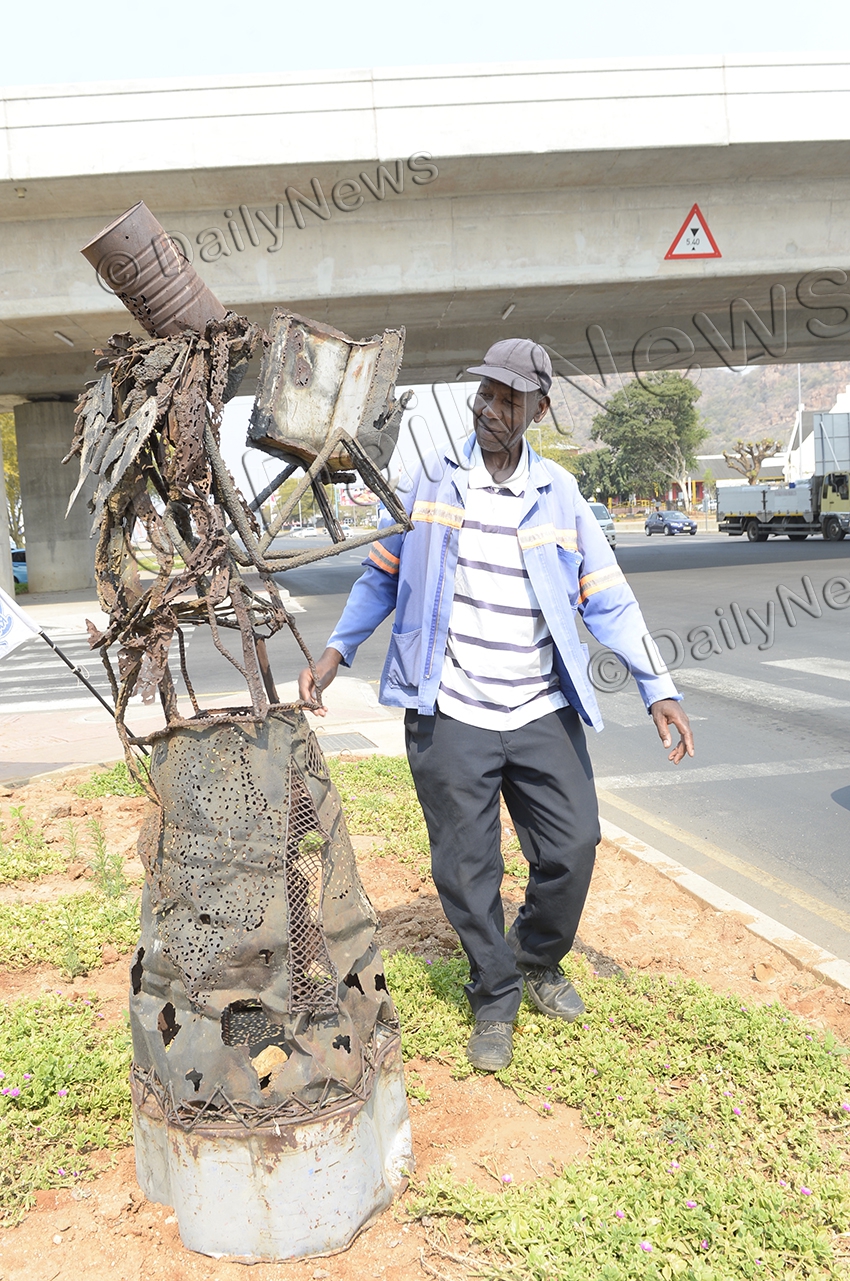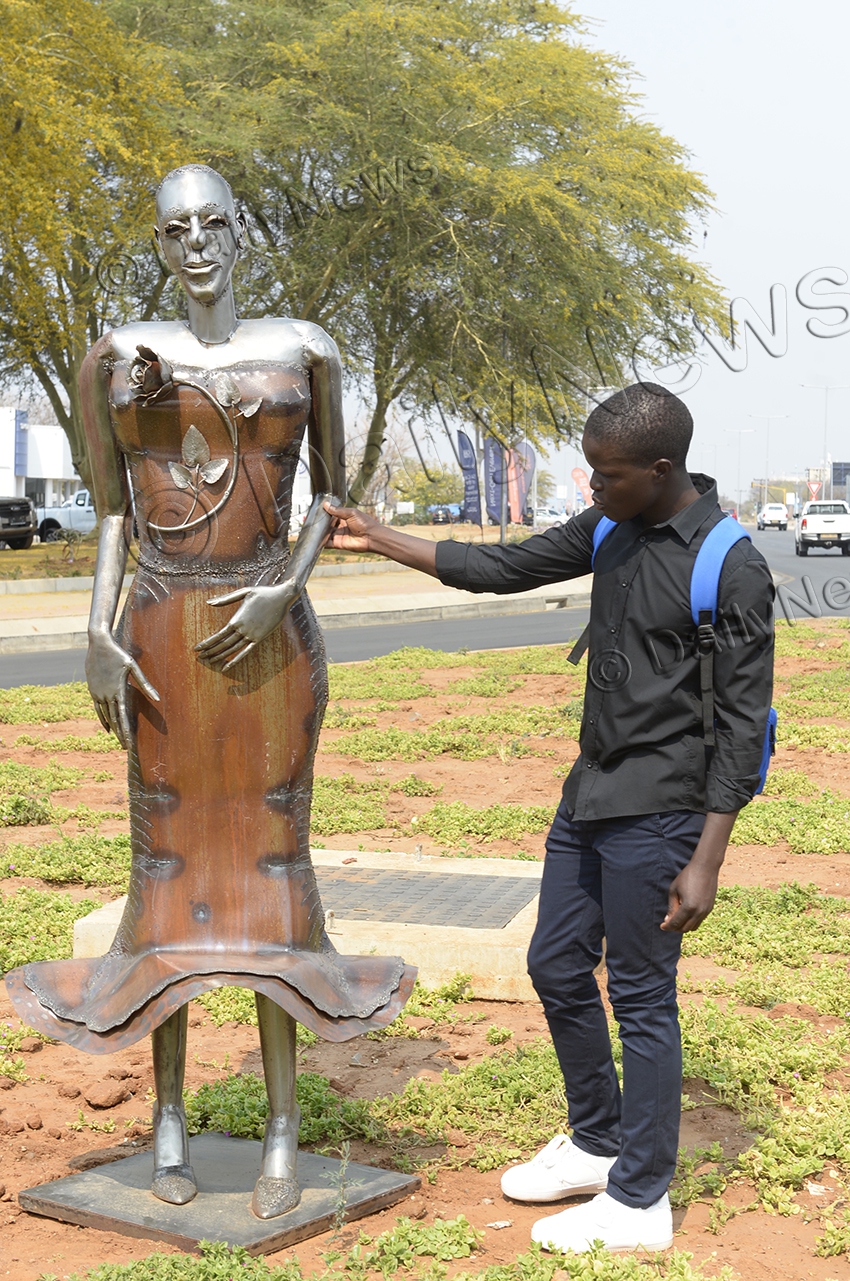George Man behind Gaborones sculptures
04 Oct 2023
A full-bodied figure of a metal woman stands starring at traffic by the interchange in Gaborone.
Motorists cannot help but stare back and wonder about the figure.
From the first glance, it is pretty obvious that the amount of hard work that the sculptor has put in molding the dolls is enormous.
Tracing him to his backyard workshop at Tshweneng ward in Gaborone, Tabaka George beams with pride upon seeing the journalists.
“It’s such an honour for me to have assisted with such few pieces for our independence celebrations. It is actually a good opportunity for me to advertise my products,” he said, after the BOPA team informed him that the purpose of the visit was to interview him regarding his pieces that decorated strategic areas around Gaborone.
“A lot of work has been put into those pieces,” he readily explains.
The towering George is a gentle giant. His yard is clean for someone who works with rusty pieces of metal, and as he sits down, he beams with a smile, almost like someone without life challenges.
Tracing his journey with art, he explained that it started at a tender age when he was still a small boy.
“Just like many young boys, we used to mould clay cows and make wire cars, and even at that age my creations were always much better than those of my peers to the extent that they would plead with me to make wire cars for them,” he said, indicating that art to him was innate.
What is even more surprising is the fact that he never went to any art school, and that his encounter with art was only at junior school where he learnt nothing out of the ordinary.
“With due respect, I cannot say much about my art exposure at the junior school because what we did there was not that much. I did art as well as design and technology and I would be lying if I say those shaped my creativity or helped me improve,” he said.
George said after completing his junior school he started working for an air-conditioning company, and that his talent there was always on display as his co-worker always sarcastically praised him for his love of unnecessary decorations.
He said after a short time he decided to quit his job to focus on his passion, and that his destiny in metal sculpting was defined around 2012 when he met renowned metal sculptor, Velius Ndaba.
“That is when I started doing metal sculpting at a serious level. I started enjoying metal work because it presented quite a challenge, and as someone who likes challenges I immersed myself on the trade,” he said.
George, who also revealed that he was equally good with wood, said that in future he planned to incorporate wood and metal together to make his artefacts more appealing.
Even though his products are as good as they may come, George said that the industry faced a challenge of slow sales for people viewed their products as expensive.
He said considering the amount of thought and work that metal sculpting required though, there was no how their products could be cheaper as one piece could take months to finish.
At the moment his main customers were government departments and parastatal organisations.
He lamented that individuals normally proposed to pay in installments or negotiate a reduction close to free. He also decried lack of appreciation of art by locals, saying that foreigners were more appreciative.
“What sustains us in this industry is not the proceeds, but just passion. We struggle to buy material or even better working tools because of lack of funds. I long wanted to use argon gas to make my products more smooth, but that would cost me around P45 000,” said George
He also said he would prefer a larger workshop than his current backyard workplace, but said that rentals for a larger place were prohibitive. He said that he once mooted relocating to his native village, Nkange, where he has a larger and free space, but dropped the thought as market was larger in the city.
George advised artists not to shy away from criticism as it helped one to grow.
“Although praises are good and always welcome, they do not always help as criticism does. Criticism helps one to correct themselves. We used to have peer review workshops where we critiqued and assessed each other, but ever since COVID-19 they died,” he said.
With a wide smile, George recalls one moment around 2019 when a government department bought one of his pieces, a full-sized lady carrying a clay pot for P45 000.
“Those are the moments one wishes could come more often, but in this industry, they are a once in a ‘long time’ achievements,” he said. ends
Source : BOPA
Author : Olekantse Sennamose
Location : GABORONE
Event : Interview
Date : 04 Oct 2023








